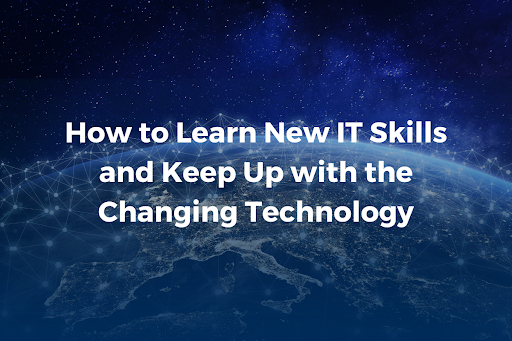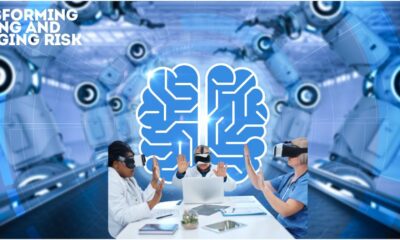Alternative Energy
How to Learn New IT Skills and Keep Up with the Changing Technology

Technology is constantly evolving, and so are the skills required to work with it. IT professionals face the challenge of keeping up with the latest trends, tools, and techniques in their field, while also delivering high-quality solutions to their clients and employers. How can they achieve this without getting overwhelmed or left behind?
The answer is simple: lifelong learning. IT professionals need to adopt a mindset of continuous improvement and curiosity and seek out opportunities to learn new IT skills and update their existing ones. This way, they can stay relevant, competitive, and innovative in the dynamic IT landscape.
But how exactly can IT professionals learn new IT skills and keep up with the changing technology? Here are some practical tips and strategies that can help:
1. Set clear goals
Before you start learning anything new, you need to have a clear idea of what you want to achieve and why. Setting SMART (Specific, Measurable, Achievable, Relevant, and Time-bound) goals can help you focus your learning efforts and track your progress. For example, instead of saying “I want to learn Python”, you can say “I want to learn how to use Python for data analysis by the end of the month”.
2. Adopt a growth mindset
A growth mindset is the belief that you can improve your abilities and intelligence through effort and feedback. Having a growth mindset can help you overcome challenges, embrace failures, and seek out new learning opportunities. On the other hand, a fixed mindset is the belief that your abilities and intelligence are fixed and cannot be changed. Having a fixed mindset can limit your potential, make you avoid difficulties, and resist feedback. To develop a growth mindset, you need to:
- Recognize and challenge your limiting beliefs
- Celebrate your achievements and learn from your mistakes
- Seek constructive criticism and feedback
- Embrace challenges and difficulties as opportunities to grow
- Persist in the face of obstacles and setbacks
3. Use active learning strategies
Active learning is the process of engaging with the material that you are learning, rather than passively consuming it. Active learning can help you retain information better, deepen your understanding, and apply your knowledge to real-world situations. Some examples of active learning strategies are:
- Taking notes and summarizing what you learned
- Asking questions and seeking answers
- Explaining the concepts to someone else
- Doing exercises and quizzes
- Solving problems and creating projects
- Reviewing and revising your work
4. Use different learning mediums
Different people have different learning preferences and styles. Some may prefer visual, auditory, or kinesthetic modes of learning, while others may benefit from a combination of them. To cater to your learning preferences and styles, you can use different learning mediums, such as:
- Books and articles
- Videos and podcasts
- Online courses and webinars
- Blogs and forums
- Tutorials and guides
- Games and simulations
5. Learn from someone with more experience
One of the best ways to learn new IT skills and keep up with the changing technology is to learn from someone who has more experience and expertise than you. This can be a mentor, a coach, a colleague, or a friend. Learning from someone with more experience can help you:
- Gain insights and tips that you may not find elsewhere
- Receive feedback and guidance on your work
- Avoid common pitfalls and mistakes
- Expand your network and connections
- Boost your confidence and motivation
6. Practice
Practice makes perfect, as the saying goes. To master any IT skill, you need to practice it regularly and consistently. Practicing can help you:
- Reinforce what you learned and improve your memory
- Develop your skills and abilities
- Discover your strengths and weaknesses
- Identify and fill your knowledge gaps
- Enhance your creativity and innovation
7. Take frequent breaks
Learning new IT skills and keeping up with the changing technology can be exciting, but also exhausting. To avoid burnout and fatigue, you need to take frequent breaks and rest your mind and body. Taking breaks can help you:
- Refresh your energy and focus
- Reduce stress and anxiety
- Improve your mood and well-being
- Consolidate your learning and memory
- Prevent information overload and boredom
“In a rapidly changing IT environment, IT professionals need to keep abreast of technological knowledge.” This quote by Guang Rong, a renowned IT expert, sums up the importance of learning new IT skills and keeping up with the changing technology. By following the tips and strategies outlined above, you can achieve this goal and advance your IT career.
Garry Lea, the CEO of Global Triangles, a leading IT staff augmentation service provider, shares his opinion on the topic: “Learning new IT skills and keeping up with the changing technology is not only a necessity but also a passion for IT professionals. It is what drives us to excel and innovate in our field. At Global Triangles, we help our clients access the best IT talent in the region, who are constantly learning and updating their skills to meet the evolving needs of the market.”
-

 Press Release7 days ago
Press Release7 days agoCV5 Capital Announces Standout Performance of Cryptanium Fund I SP, Beating Industry Benchmarks
-

 Business4 days ago
Business4 days agoS&P 500 Soars in Best May in Decades Amid Tariff Relief and Nvidia’s Surge
-

 Healthcare5 days ago
Healthcare5 days agoAttention Economy Arms Race: Reclaim Your Focus in a World Designed to Distract You
-

 Immigration4 days ago
Immigration4 days agoTrump’s Immigration Crackdown: Legal Battles and Policy Shifts
-

 Business4 days ago
Business4 days agoUS Stock Market Soars in May Amidst Tariff Tensions and Inflation Worries
-

 Government4 days ago
Government4 days agoTrump Administration’s Government Reshaping Efforts Face Criticism and Legal Battles
-

 Business4 days ago
Business4 days agoTrump’s Tariffs: A Global Economic Reckoning
-

 Foreign Policy2 days ago
Foreign Policy2 days agoInside Schedule F: Will Trump’s Federal Workforce Shake-Up Undermine Democracy?






























